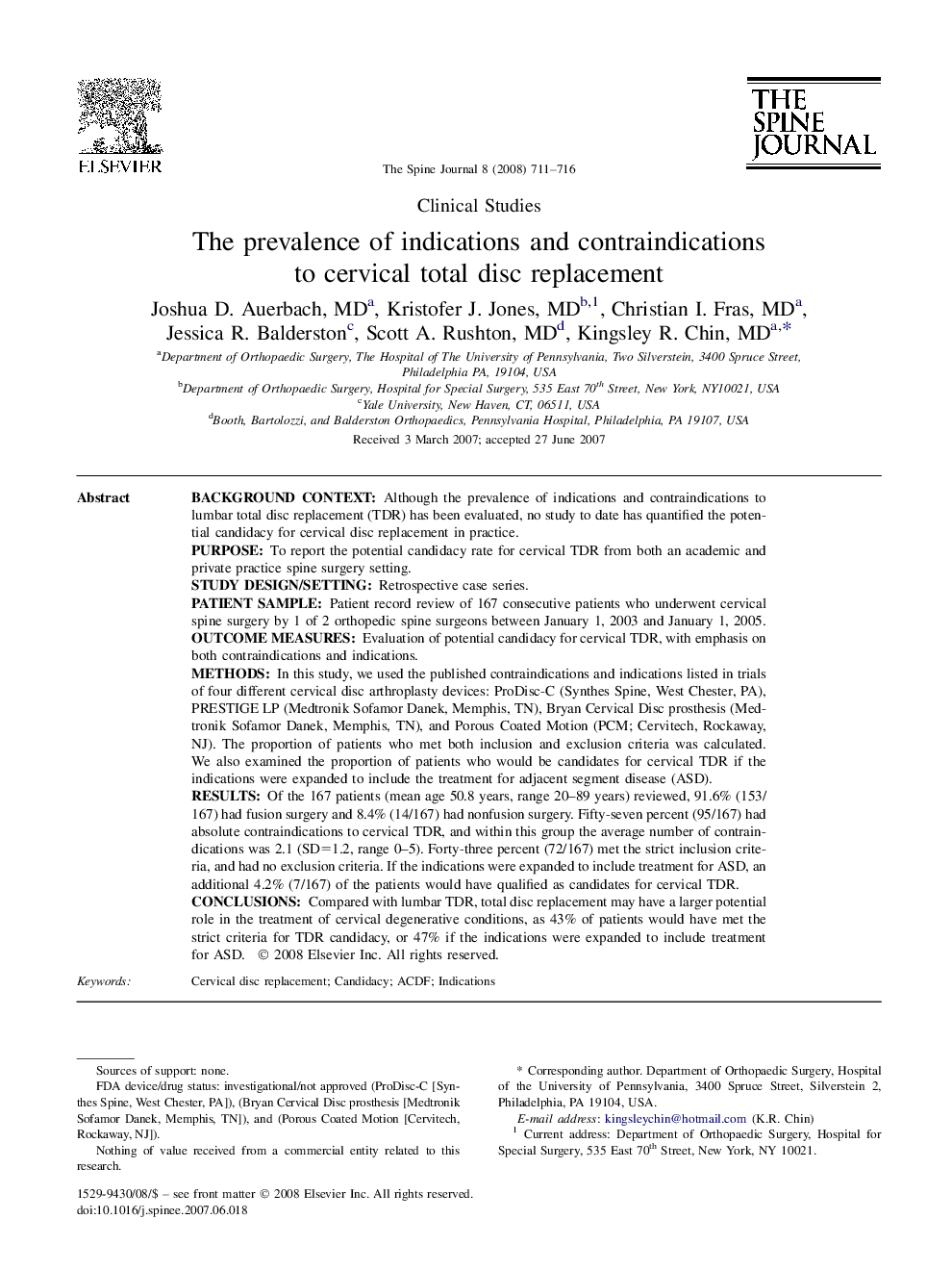| Article ID | Journal | Published Year | Pages | File Type |
|---|---|---|---|---|
| 4099913 | The Spine Journal | 2008 | 6 Pages |
Background contextAlthough the prevalence of indications and contraindications to lumbar total disc replacement (TDR) has been evaluated, no study to date has quantified the potential candidacy for cervical disc replacement in practice.PurposeTo report the potential candidacy rate for cervical TDR from both an academic and private practice spine surgery setting.Study design/settingRetrospective case series.Patient samplePatient record review of 167 consecutive patients who underwent cervical spine surgery by 1 of 2 orthopedic spine surgeons between January 1, 2003 and January 1, 2005.Outcome measuresEvaluation of potential candidacy for cervical TDR, with emphasis on both contraindications and indications.MethodsIn this study, we used the published contraindications and indications listed in trials of four different cervical disc arthroplasty devices: ProDisc-C (Synthes Spine, West Chester, PA), PRESTIGE LP (Medtronik Sofamor Danek, Memphis, TN), Bryan Cervical Disc prosthesis (Medtronik Sofamor Danek, Memphis, TN), and Porous Coated Motion (PCM; Cervitech, Rockaway, NJ). The proportion of patients who met both inclusion and exclusion criteria was calculated. We also examined the proportion of patients who would be candidates for cervical TDR if the indications were expanded to include the treatment for adjacent segment disease (ASD).ResultsOf the 167 patients (mean age 50.8 years, range 20–89 years) reviewed, 91.6% (153/167) had fusion surgery and 8.4% (14/167) had nonfusion surgery. Fifty-seven percent (95/167) had absolute contraindications to cervical TDR, and within this group the average number of contraindications was 2.1 (SD=1.2, range 0–5). Forty-three percent (72/167) met the strict inclusion criteria, and had no exclusion criteria. If the indications were expanded to include treatment for ASD, an additional 4.2% (7/167) of the patients would have qualified as candidates for cervical TDR.ConclusionsCompared with lumbar TDR, total disc replacement may have a larger potential role in the treatment of cervical degenerative conditions, as 43% of patients would have met the strict criteria for TDR candidacy, or 47% if the indications were expanded to include treatment for ASD.
